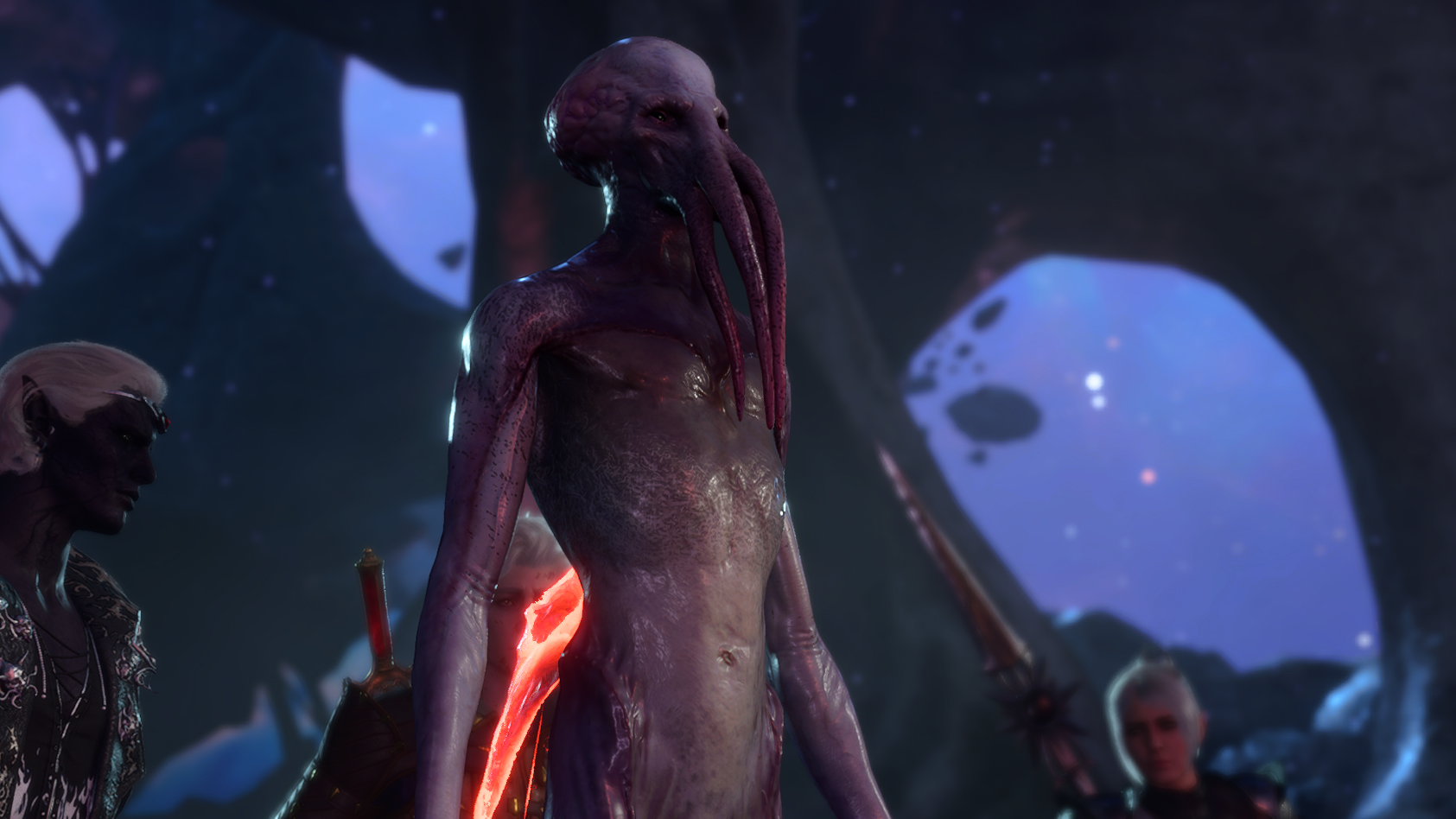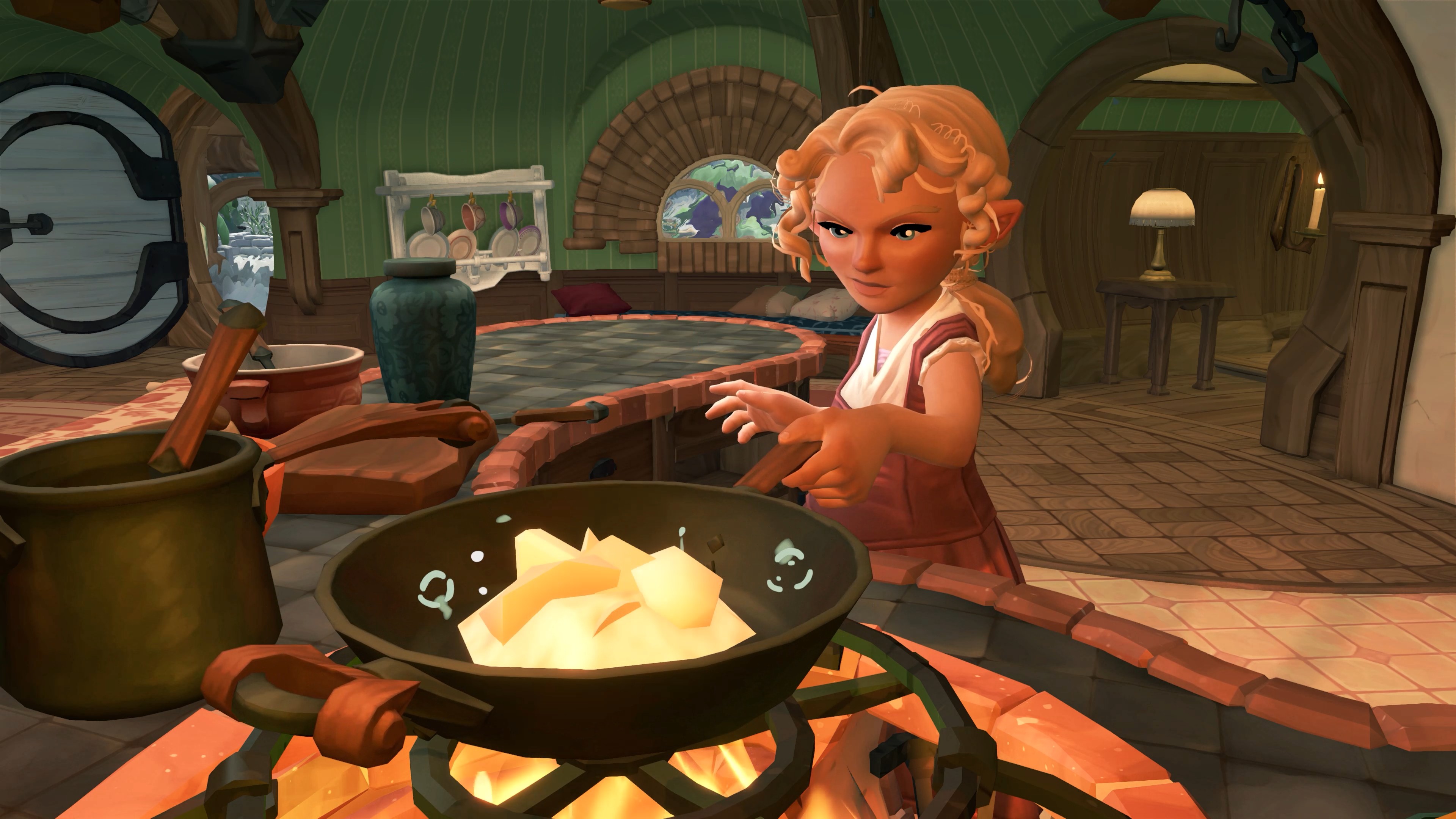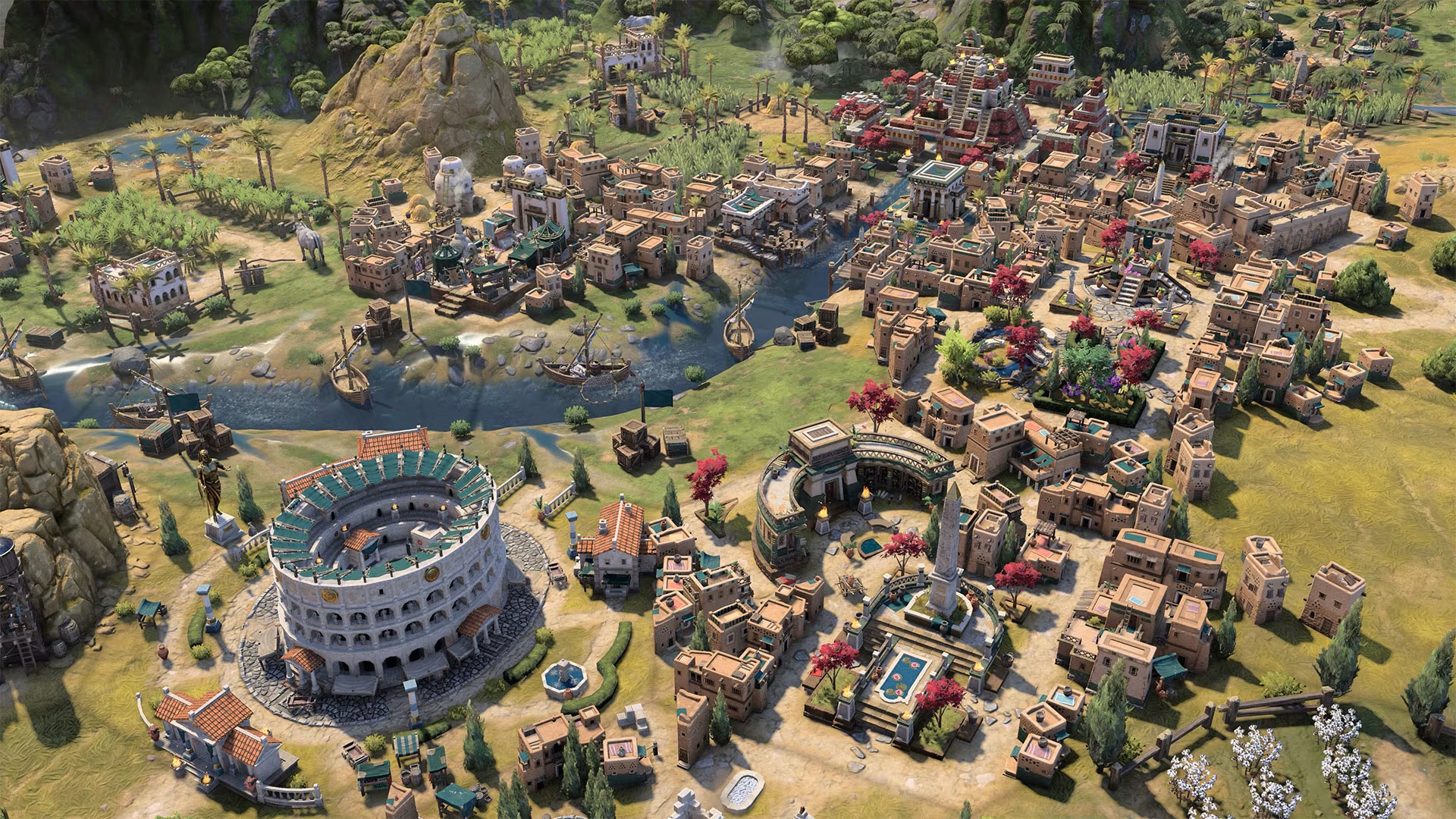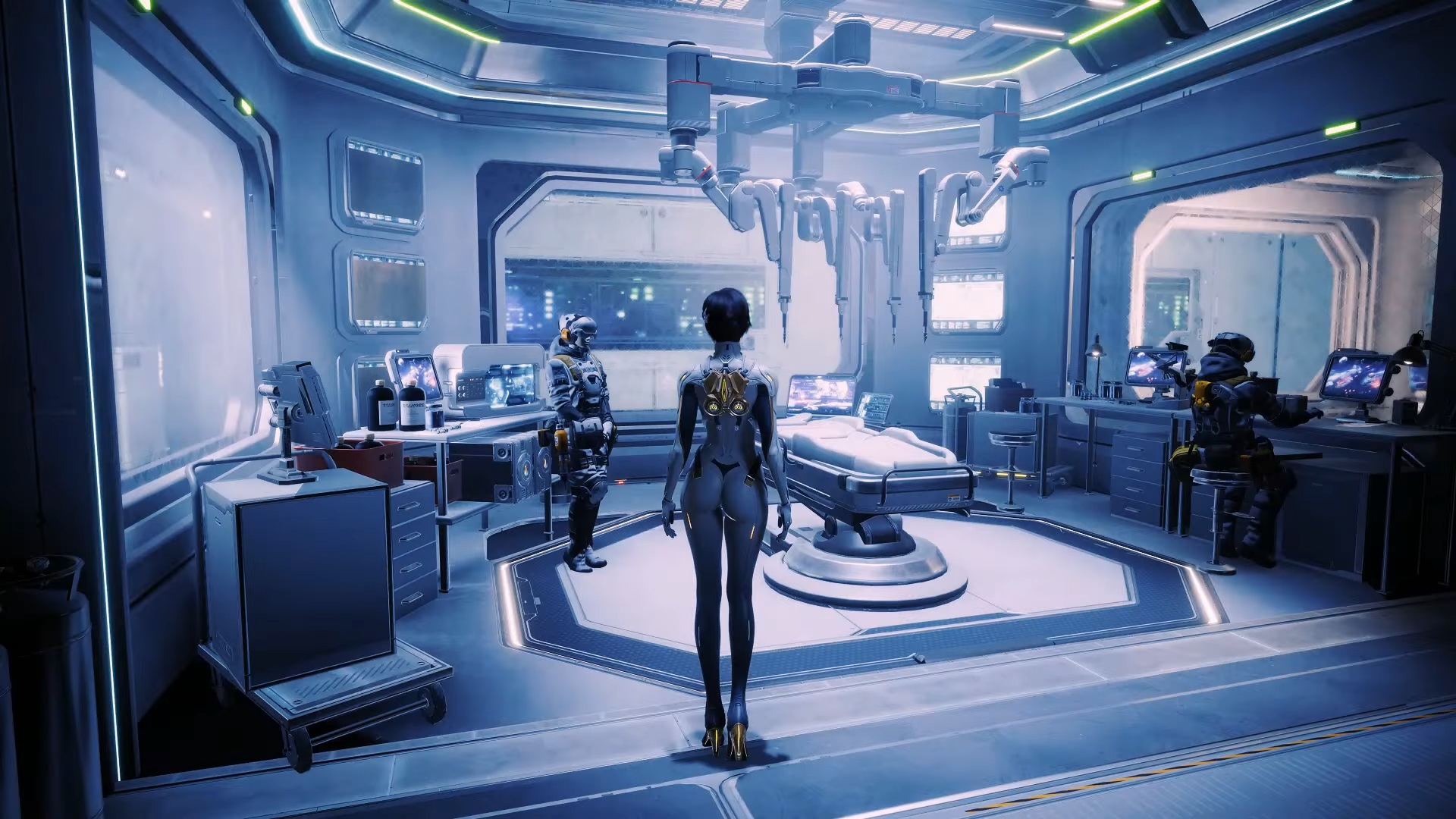
Can you spare some change?
Warning: This article contains major spoilers for Baldur’s Gate 3’s story and the Dark Urge origin.
From the opening cinematic, where you find yourself trapped in a pod and watch as a razor-mouthed leech is lowered into your eye, Baldur’s Gate 3 makes it very clear that it is a game about the body—about what can happen to a body, and what it can become.
The theme of physical transformation isn’t new to RPGs. In Fable, you grow devil horns if you’re evil or don an ever-present halo if you’re good. In Mass Effect 2, the more “renegade” choices you make, the more your recently reconstructed face cracks with glowing scars.
But physical transformation in Baldur’s Gate 3 goes beyond just a gimmick. It’s the basis of the game’s plot, affects both dialogue and combat mechanics, and plays a major role for not only the player character but their companions as well. Transformation is as much a metaphor in Baldur’s Gate 3 as it is in major RPG predecessors, but it’s bigger, better, and more complex.
The player and their brain-slugged crew don’t have a chance to opt-out of that first grisly transformation. The slug doesn’t affect your appearance (at first), but there’s nothing quite so physical, so personal, as one’s brain. For the first part of the game, the threat of sudden and painful transformation into the same kind of tentacled thing that abducted you in the first place looms ominously.
Thanks to a mysterious artifact and a guardian who visits our unfortunate cast of adventurers in their dreams, the mindflayer transformation is kept at bay. Players can even use other brain slugs that they find throughout their journey in order to unlock cool illithid abilities.
(Image credit: Larian Studios)
I always have a hard time resisting the allure of illithid powers, no matter how many times I’ve played BG3. The psionic abilities can be extremely helpful in punishing combat scenarios—but they come with a risk. At the end of act two, you can be offered the option to “evolve” the powers granted by the brain slugs and become a partial illithid. If you’ve been expanding the slug’s hold over your brain, you may fail a Wisdom check and be unable to resist this change.
At the end of the game, it’s made clear that a mind flayer may be necessary to defeat the elder brain and save the world. Your guardian, who it turns out is actually a mind flayer called the Emperor, may be able to fill this role if you haven’t alienated them. Otherwise, the player character may have to transform into a mind flayer. That, or ask one of their companions to do so.
Fear of transformation is where we started the game, and the need for transformation is where we end it.
Everything that’s come in the previous acts leads up to this delicious decision. We’ve watched illithid influence be used to control minds and destroy societies. We’ve seen the strength that illithid powers bring to combat, possibly utilizing them ourselves. We’ve interacted with countless individuals who fear mind flayers or are disgusted by them. And, if we chose to dig into the Emperor’s past, we’ve gained a new understanding of what a mind flayer’s life can look like—maybe we’ve even come to find some beauty there.
Ultimately, this question of whether to evolve is inevitable. Fear of transformation is where we started the game, and the need for transformation is where we end it. The player is asked to decide for themselves how they feel about physical change and what they are willing to become in the face of an impossible conflict.
The devil’s in the details
(Image credit: Larian Studios)
Turning into a mind flayer is not the only possible transformation in the game for the player or their companions. In fact, some kind of shift in appearance is common for the game’s characters as they grapple with who they want to be and what power they will seek or leave behind.
Wyll’s character is built on an interesting contradiction. Here is this noble protector of the people, a classic RPG hero. But in between elegant lunges and ripostes, he throws eldritch blasts, courtesy of his infernal pact. Wyll cares about people, sure, but he also cares about power. How else is he supposed to help anyone, after all?
In the first Act, if Wyll breaks his infernal pact by refusing to kill Karlach, his punishment is to grow devilish horns, making him look like the very thing that he hunts. Wyll’s new appearance is more classically tied to evil in-game choices, but it’s a kind-hearted one that triggers it.
Wyll wants to be loved and admired, known for his heroic deeds. Unfortunately, achieving the kind of power that actually allows him to help people comes at the cost of his desire for recognition. This inner turmoil is made manifest in Wyll’s transformation. If he does kill Karlach, he remains the same on the outside, but he’s lost an important inner conflict. Devil Wyll is the best version of himself—his form an outward recognition that to do the right thing is a constant battle and often comes at a steep price.
Dark side
(Image credit: Larian Studios)
Then there’s the Dark Urge, one of the origins the player can select during character creation. The Dark Urge is plagued by murderous thoughts and actions that they don’t understand until they reclaim their memory as a child of Bhaal. They can unlock a “slayer form” by leaning into their evil nature and committing a little murder here and there.
On its face, this particular transformation looks a lot more like that classic good vs evil conflict. Good—reject your past and resist the urge to violently attack everyone you meet. Evil—kill some people, get a rad monster form to use in battle. My own Dark Urge playthrough was a little more complicated than that.
I was valiantly battling my inner demons and declined my butler’s request to kill Isobel. Unfortunately, my team failed to stop Isobel from being kidnapped during the fight at Last Light Inn. When Isobel is taken from the vicinity, the protective veil falls and pretty much everyone at the inn dies. The butler was delighted and still gave me the slayer form even though I hadn’t intentionally killed anyone. Instead of being a symbol of my commitment to darkness, the slayer form was a reminder of my failures.
Turn around
(Image credit: Larian Studios)
It makes sense that transformation appears in most RPGs—these are often worlds of magic or sci-fi technology, drawing on tropes of myth and legend. But for BG3, transformation isn’t just a feature, it’s an all-encompassing theme. I could keep describing examples forever. Even beyond the larvae in their brains, almost all of your companions are touched by it both before your adventure begins and as it goes on—from the magical nuke in Gale’s chest and his possible rise to godhood, to Astarion’s relationship to his vampirism, to Shadowheart’s altered memories (and even more altered hairstyle).
Transformation is certainly an appropriate focus for a game that’s ultimately all about how your words and actions change the world and the people around you. It helps ensure that every playthrough is truly unique—even when they’re for the worse, these transformations are a thrilling marker of your choices. In Larian’s version of the Forgotten Realms, transformation is both inescapable and fascinating, and it’s a huge part of what makes Baldur’s Gate 3’s sprawling adventure absolutely unforgettable.





